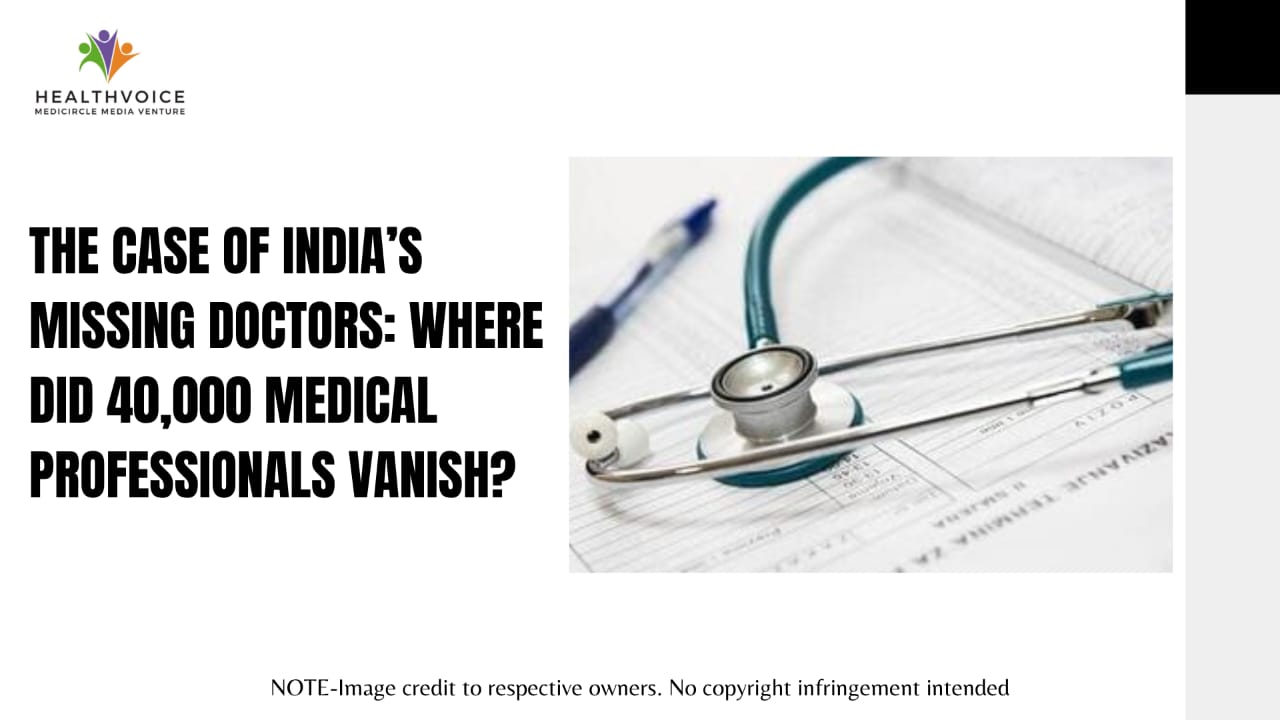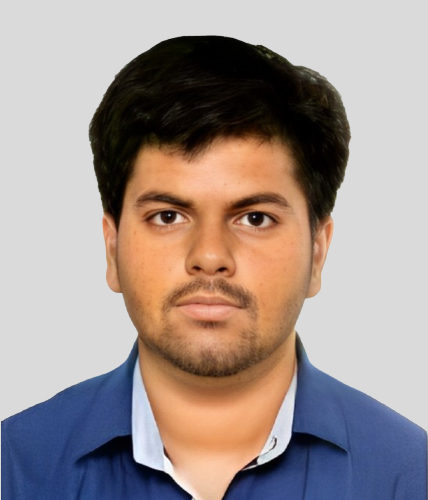The Case of India’s Missing Doctors: Where Did 40,000 Medical Professionals Vanish?
This system should be transparent, verifiable, and open to scrutiny by both doctors and the public. Such a step would not only prevent future discrepancies but also rebuild the credibility that the NMC has gradually lost.

The corridors of Indian healthcare are echoing with a question that no one seems ready to answer. How can a country that produces nearly 80,000 doctors every year add just 21 to its official register? The recent revelation before Parliament, backed by the National Medical Commission (NMC) data, claims that India has 13,86,157 registered doctors which is an increase of only twenty-one since the previous year. For a nation as vast and medically active as India, such a marginal rise appears less like a statistical oddity and more like a serious administrative lapse that challenges the credibility of the system itself.
The numbers are not just confusing they are contradictory. A closer look reveals massive gaps between what the NMC has recorded and what state medical councils report. For instance, Delhi’s official count in the NMC data shows fewer than 31,500 registered doctors, whereas the Delhi Medical Council’s (DMC) rolls had already crossed 72,600 back in 2020. That’s a concerning difference of more than 40,000 doctors missing from the nation’s central database. Such an error cannot be brushed aside as a clerical oversight; it calls into question the accuracy of the very registry that guides India’s healthcare planning.
Kerala tells a similar story. The NMC claimed the southern state had just over 73,000 doctors, while the Kerala Medical Council insists the true figure exceeds one lakh. Tamil Nadu too shows a wide gap, while the NMC’s data reports fewer than 1.5 lakh, the state’s records surpass 2 lakh. Each mismatch adds a layer of confusion, and together they create a deeply worrying picture of how India manages its medical manpower statistics. For a country where the doctor-to-population ratio is often debated in Parliament and used to justify policy shifts, such distorted figures could have damaging consequences on national health strategy.
Dr. Arun Kumar, national general secretary of the United Doctors Front (UDF), voiced what many in the medical community have been thinking aloud. “Placing incorrect or incomplete data before the Lok Sabha is not just negligence it obstructs the functioning of Parliament,” he remarked. In the world of governance, such misrepresentation can amount to contempt of the House. The UDF had filed a Right to Information (RTI) request to verify the real figures for Delhi, and the DMC’s response laid bare the disparity. According to DMC’s own electoral data, the number of registered doctors eligible to vote in council elections was 57,749 in 2014 and 72,636 in 2020. These figures represent active, renewed registrations, not dormant ones. Given the annual inflow of hundreds of new registrations, the real number should be even higher today.
If Delhi’s data alone is off by over 40,000, the implications reflect across the entire nation. The miscalculated doctor-to-population ratio may create the illusion of scarcity in areas that are actually well-staffed. In Delhi, such false data can lead to policy decisions that misdirect resources and even introduce unnecessary measures like compulsory service bonds, all under the pretext of a doctor shortage. As Dr. Kumar cautioned, “If they can’t get Delhi’s data right, one can only imagine the state of the rest.”
The issue cuts to the crux of how healthcare policy is crafted. When decision-makers rely on inaccurate data, they end up designing flawed strategies. A gap of 66% between the NMC’s data and the DMC’s actual figures isn’t a minor inconsistency, it’s a complete distortion. Kerala’s discrepancy stands at 33%, and Tamil Nadu’s difference runs into tens of thousands. Such vast misreporting means the government’s assessment of where doctors are needed, how many should be trained, and how healthcare resources are distributed is all based on shaky ground.
The NMC, which replaced the erstwhile Medical Council of India (MCI) in September 2020, was supposed to be the ray of transparency and efficiency. Its creation was celebrated as the dawn of a new era in medical regulation and an end to corruption and opacity. Yet, five years into its establishment, the NMC appears to be faltering on one of its most fundamental responsibilities: maintaining an accurate and up-to-date national medical registry. The very system meant to fix the loopholes of the MCI seems to be replicating them in a new form.
According to members of various state medical councils, the NMC has been inactive, understaffed, and slow to respond. Many key positions have remained vacant for over a year, and communication between the national and state bodies has nearly broken down. As one council representative from Kerala pointed out, “There is no proper process to ensure that new registrations made at the state level automatically reflect in the NMC’s central database. This is an outdated and broken system that no longer serves its purpose.”
The failure of the NMC to synchronize with state councils doesn’t just create statistical confusion, it undermines public trust. The national medical register is more than a list of names; it’s the foundation for health workforce planning, hospital staffing, and national emergency preparedness. When such data is unreliable, every health policy built upon it becomes questionable. In a country where healthcare disparities between rural and urban areas remain vast, accurate doctor distribution data is crucial to bridge the gap.
One of the most alarming aspects of this issue is how easily misinformation can cascade into policy. When authorities believe there are fewer doctors than there actually are, they might introduce coercive service bonds or restrict postgraduate opportunities in the name of addressing shortages. These policies directly impact the lives of young doctors, influencing where and how they practice. Meanwhile, thousands of qualified doctors may remain uncounted, their existence unacknowledged in national planning documents.
The story of India’s missing doctors also highlights a deeper administrative malaise. The lack of real-time data integration between state medical councils and the NMC shows how outdated systems continue to affect modern healthcare governance. In an era where digital health records, e-hospitals, and online consultations are becoming the norm, it’s ironic that the country’s top medical regulator still struggles to maintain a unified digital registry of its practitioners.
Healthcare experts argue that such data mismatches can have serious consequences during crises like pandemics. During COVID-19, India faced immense challenges in mobilizing healthcare workers efficiently. Accurate doctor data would have enabled better deployment of resources across regions, yet such gaps expose the fragility of India’s preparedness. If even the basic count of registered medical professionals remains disputed, one must question how robust our health infrastructure truly is beneath the surface.
The issue isn’t confined to bureaucracy; it has real-world consequences for patients too. Misjudging the number of doctors in a state directly affects how healthcare is planned and delivered. For example, if Delhi is believed to have just 31,000 doctors instead of over 70,000, the city’s patient load, hospital needs, and training requirements will be assessed incorrectly. This flawed perception could lead to overcrowded medical colleges, inadequate staffing in government hospitals, and misguided health policies that fail to match the ground reality.
Moreover, this discrepancy raises concerns about the registration renewal process itself. Many doctors practicing abroad or in other states may not renew their registrations in the original council, which could contribute to outdated numbers. However, that does not explain such massive differences between official figures. The absence of a uniform, centralized renewal system creates confusion and leaves space for error. A nationwide digital medical registry, updated in real-time and linked to Aadhaar or professional ID, could easily solve this issue yet such modernization remains elusive.
For a nation that aspires to be a global healthcare hub, India cannot afford such inconsistencies in its foundational data. The credibility of the medical profession depends on a transparent and accurate record system. Every policymaker, hospital, and healthcare planner relies on these numbers to design programs, allocate funds, and manage public health emergencies. When these numbers fail, the entire chain of decision-making collapses.
The National Medical Commission was envisioned as a modern, reform-oriented body capable of restoring faith in medical regulation. But today, it faces growing criticism for being slow, inaccessible, and bureaucratic. Many within the medical fraternity believe that unless the NMC transforms its data management processes, India’s healthcare system will continue to suffer from poor planning and misplaced priorities.
The way forward demands a structural overhaul. The NMC must collaborate actively with all state medical councils, ensuring that every new registration, renewal, or transfer is reflected in real-time on a central digital platform. This system should be transparent, verifiable, and open to scrutiny by both doctors and the public. Such a step would not only prevent future discrepancies but also rebuild the credibility that the NMC has gradually lost.
The story of India’s “missing doctors” is not just about figures it’s about faith. Faith in institutions that regulate, in systems that plan, and in leaders who make decisions based on those plans. When those pillars crack, the entire structure trembles. It’s time for the NMC to rebuild its foundation not through speeches or promises, but through transparent action and accurate data.
 Sunny Parayan
Sunny Parayan
#HealthcareIndia #PublicHealth #HealthPolicy #NMC #HealthcareCrisis #DoctorsOfIndia #HealthSystem #HealthcareLeadership #MedicalEthics #DigitalHealth #HealthData #HealthSystem #healthvoice
